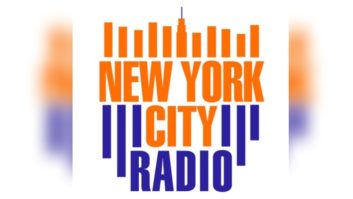The Recepter Radio Proves to Be a Tough Performer in a Tough Town
New York City is a tough town. The old cliche that “if you can make here, you can make anywhere” is rooted in a fundamental truth. Funny how it applies as equally to radio receivers as to people.
Manhattan is a canyon of RF horrors. Radio signals crowd into a jigsaw jungle of concrete, steel and mysterious emissions. When I re-located here over a decade ago, I had to give up world-band radio listening. Too much interference in my Upper West Side apartment. It was a challenge just to get a listenable NPR broadcast on the cheap tuners in common AM/FM receivers.
It was in the years after moving into the city that I was first exposed to a new generation of premium tabletop radio receivers designed for difficult reception areas.
Among the best were the GE Superadio III ($65), C. Crane’s CCRadio ($160), and two models designed by the late Henry Kloss – the Tivoli Audio Model One ($100), and the now discontinued Model 88 from Cambridge Soundworks ($150).
Side by side
Now it is a pleasure to welcome the Boston Acoustics Recepter Radio ($159) to the ranks of the best tabletop AM/FM radios. The Recepter has a handsome, modern compact design with simple exterior controls, a big, bright easy-to-read LCD display and a large front-facing speaker. The Recepter is available in three colors: charcoal, platinum and polar white.
(click thumbnail)The Recepter is only four inches high, but has a solid feel.
To assess the new radio’s quality, I tested a Recepter side-by-side with a GE Superadio III and a Tivoli Model One. Its FM reception performance – using the included wire antenna – equaled both.
When I attached a Terk FM Pro antenna, the Recepter soared, almost achieving flight. It received all the marginal FM stations in my area with ease. It locked precisely onto stations and didn’t drift off the frequency. For FM performance, I have used no better receiver – ever!
However, the big surprise came with the Recepter’s AM performance. Though Boston Acoustics doesn’t highlight the radio’s AM capability, it ranks with the best we’ve heard from this kind of product. AM reception with our Recepter equalled the excellent Tivoli Model One, but, at least at my location, it clearly outperformed the GE Superadio III.
This came as a bit of a shock, as the Superadio’s reputation is built on its exceptional AM reception. GE beefed up this classic model with additional RF stages and a large, built-in 200 mm ferrite loopstick AM antenna. The Superadio’s performance has made it a preference of many AM and FM DXers.
Small size
I compared all three radios on a range of AM stations. Each time the Recepter and Model One tied, both offering clearer reception with slightly less background noise than the Superadio. The side-by-side comparisons were made during afternoon hours with each radio’s internal AM antenna. Further tests in the night hours upheld the Recepter’s excellent performance.
While not stressing AM performance, Boston Acoustics most certainly touts the Recepter’s ability to pull in weak FM stations and the high selectivity that allows it to clearly separate closely spaced stations. But the manufacturer, known best for its high-fidelity speaker products, most emphasizes the wide-range speaker driver that enables the surprisingly high-quality sound to come from such a small radio.
And small it is. Dimensions of only 4 x 7.5 x 6 inches and a weight of four pounds make the Recepter the smallest of the premium table top receivers that we’ve seen. The Tivoli Model One, the radio we’d pick as the Receptor’s closest competitor, is the same weight and only an inch wider, perhaps due to a wooden case that the Receptor does not have.
Boston Acoustics said the speaker driver, designed for the radio, is combined with an actively equalized amplifier that uses proprietary bass enhancement circuitry called BassTrac for “full, satisfying bass even at low volume.”
We agree that for its size, the Recepter is a very good-sounding radio. But in our listening tests, we’d give the Tivoli Model One a slight edge for sonic quality.
To our ears, the Model One’s sound was a bit richer and the bass a bit deeper. However, it should be emphasized that the contest was very close. It’s also important to note that placement of these small radios is critical to sound fidelity and it can change significantly depending upon location and positioning.
Functions
Where the Recepter really differentiates itself from the Model One is with the automation features. The Model One is a bare-bones, austere design dating back to Henry Kloss’s pioneering days at KLH. It reflects Kloss’s philosophy of extreme simplicity. He resisted adding what he considered unneeded gadgetry to a product.
In an interview in 1994 with Radio World, Kloss wrestled with what he considered the unnecessary accouterments of radio receiver automation and was uncertain why so many people seemed to want it. To him the sound was everything. A giant, silky-smooth manual tuning knob and volume control was all that a good radio needed.
The designers of the Recepter chose a different direction, one that differentiates it from Kloss’s Model One. However, they wisely resisted the Japanese tendency toward complexity by adding too many buttons and controls. (Note: At this winter’s CES show, Tivoli Audio announced the Henry Kloss Model Three Clock Radio. It was not immediately available for comparison but Radio World plans a review.)
The Recepter’s AM/FM tuner has a 20-preset station memory. For clock radio use, it offers two independent wake-up alarms. Either alarm can be set to music, buzzer or both. Most controls are located under a lift-up door on top of the radio. Battery backup, using three AAAs, retains presets and time settings during a power outage.
An LCD display presents the station, clock, and alarm/sleep status, while a sleep function lets the Recepter play for up to an hour before turning off automatically. There is no preset button clutter. Once you have stored your favorite stations in memory using the button under the lid, the front-mounted tuning knob can be set to tune in only those stations. It’s a nice trick.
The Boston Acoustics Recepter Radio is among the best modern compact AM/FM clock radios ever built. It’s ideal for difficult reception areas where a premium quality tuner is needed. Its sound quality is so good you’ll do a double take when noting the size of the speaker. And its feature set is ideal for those desiring a simple level of automation and a pleasant morning wake-up call.
To order a Recepter radio, call (800) 770-7686 or visit www.bostonacoustics.com












